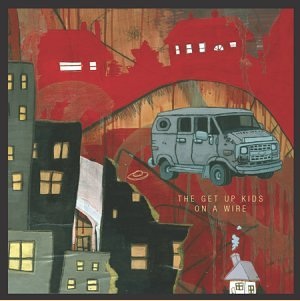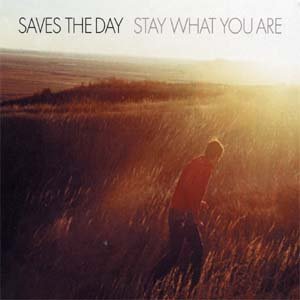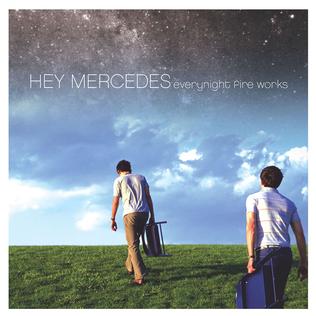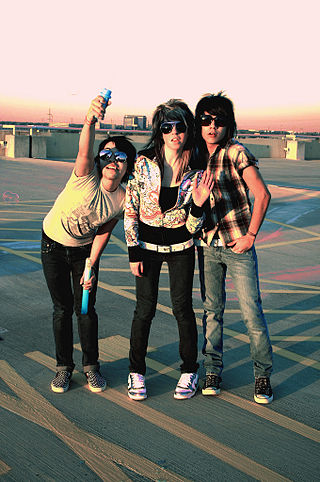Emo is a music genre characterized by emotional, often confessional lyrics. It emerged as a style of hardcore punk and post-hardcore from the mid-1980s Washington, D.C. hardcore scene, where it was known as emotional hardcore or emocore. The bands Rites of Spring and Embrace, among others, pioneered the genre. In the early-to-mid 1990s, emo was adopted and reinvented by alternative rock, indie rock, punk rock, and pop-punk bands, including Sunny Day Real Estate, Jawbreaker, Cap'n Jazz, and Jimmy Eat World. By the mid-1990s, Braid, the Promise Ring, and the Get Up Kids emerged from Midwest emo, and several independent record labels began to specialize in the genre. Meanwhile, screamo, a more aggressive style of emo using screamed vocals, also emerged, pioneered by the San Diego bands Heroin and Antioch Arrow. Screamo achieved mainstream success in the 2000s with bands like Hawthorne Heights, Silverstein, Story of the Year, Thursday, the Used, and Underoath.

Something to Write Home About is the second studio album by American rock band the Get Up Kids, released on September 28, 1999, through Vagrant Records and the band's own label Heroes & Villains Records. Following the promotional tours for their debut album Four Minute Mile (1997), the band were in discussion with Mojo Records. During this period, James Dewees joined as the band's keyboardist. As negotiations with the label eventually stalled, they eventually went with Vagrant Records. They recorded their next album at Mad Hatter Studios in Silver Lake, Los Angeles, California, co-producing it with Chad Blinman and Alex Brahl. Described as an emo and pop-punk album, Something to Write Home About expands on the harder edge of its predecessor, with frontman Matt Pryor citing the works of the Foo Fighters, Jimmy Eat World and Wilco as influences.

The Get Up Kids are an American rock band from Kansas City. Formed in 1995, the band was a major act in the mid-1990s Midwest emo scene, otherwise known as the "second wave" of emo music. Their second album Something to Write Home About remains their most widely acclaimed album, and is considered to be one of the quintessential albums of the second-wave emo movement. They are considered forefathers of the emo genre, and have been widely credited as being an influence, both by contemporaries Saves the Day and later bands such as Fall Out Boy, Taking Back Sunday and the Wonder Years.

Four Minute Mile is the debut studio album by American rock band The Get Up Kids.
The Anniversary is an American band formed in Lawrence, Kansas, in 1997 by Josh Berwanger, James David, Christian Jankowski, Adrianne Verhoeven and Justin Roelofs. The Anniversary was the solidification of a line-up that had been in flux for a year. After two years of playing shows across with the Midwest with bands that included The Get Up Kids, Braid and Superchunk, The Anniversary signed to Vagrant Records.
Vagrant Records is an American record label based in California. It was founded in 1995 by Rich Egan and Jon Cohen. The label focuses on rock, but features artists in a variety of other genres including folk, soul, electronic, and pop. It is home to artists such as The 1975, Death Spells, Eels, Edward Sharpe and the Magnetic Zeroes, CRUISR, Active Child, PJ Harvey, School of Seven Bells, Black Rebel Motorcycle Club, James Vincent McMorrow, Black Joe Lewis, Wake Owl, Blitzen Trapper, and Bombay Bicycle Club. Originally, Vagrant Records was mostly focused on emo bands such as Dashboard Confessional, Saves the Day, The Get Up Kids, Senses Fail, and Alkaline Trio. The label is considered one of the pre-eminent labels of the emo music scene.

On a Wire is the third studio album by American rock band the Get Up Kids on Vagrant Records. Released three years after their breakout sophomore album Something to Write Home About, On a Wire was a massive departure from the band's established sound, eschewing the brighter pop-punk that helped define emo as a genre in favor of a darker, more adult sound inspired by 70's rock bands like Led Zeppelin.

Through Being Cool is the second studio album by American rock band Saves the Day, released on November 2, 1999, by Equal Vision. The songs on Through Being Cool were written while the band members attended New York University. The album was recorded in 11 days and represented the band's transition from a melodic hardcore sound to a more pop punk style. It was produced by Steve Evetts at Trax East Recording Studio in South River, New Jersey. The band's members dropped out of college to tour alongside Snapcase, New Found Glory, Hot Water Music, and Face to Face, among others. A music video was filmed for the song "Shoulder to the Wheel."

Stay What You Are is the third studio album from American rock band Saves the Day, released in 2001. The album received positive reviews from critics at the time of its release and remains an influential album in the emo and pop punk genres. It has been described as "channel[ling] the thrill of pop punk, the intellect of indie rock, and the raw emotion of emo all at once." Lead single "At Your Funeral" charted in the United Kingdom and Scotland.

Frame & Canvas is the third studio album by American rock band Braid. It was released on April 7, 1998, through Polyvinyl Record Co. After the release of the band's second studio album, The Age of Octeen (1996), drummer Damon Atkinson replaced Roy Ewing due to him being unable to commit to touring. Recording sessions took place at Inner Ear Studios in December 1997, with J. Robbins helping with production during the sessions. The album is an emo and post-hardcore release, for which the lyrics were co-written by vocalist/guitarists Chris Broach and Bob Nanna, or solely wrote by Nanna.

Matthew Pryor is an American musician who lives in Lawrence, Kansas. He is best known as a founding member and the lead vocalist of the Get Up Kids, one of the most influential acts of the second-wave emo music scene.
Koufax was an American indie rock band from Toledo, Ohio.

Everynight Fire Works is the debut studio album by American rock band Hey Mercedes. Following the demise of Braid, most of the members formed Hey Mercedes, with guitarist Mark Dawursk joining in early 2000. The band released a self-titled EP through Polyvinyl Record Co., before signing to Vagrant Records at the end of the year. They recorded their debut with Burning Airlines member J. Robbins at Pachyderm Studios in Cannon Falls, Minnesota in April 2001. Everynight Fire Works is an alternative rock, emo, indie rock and pop punk record that drew comparisons to Burning Airlines, Jets to Brazil, and Shudder to Think.

It Had to Do with Love is the first studio album by the American indie rock band Koufax. It was released in 2000 on Vagrant Records.
Emo pop is a fusion genre combining emo with pop-punk, pop music, or both. Emo pop features a musical style with more concise composition and hook-filled choruses. Emo pop has its origins in the 1990s with bands like Jimmy Eat World, the Get Up Kids, Weezer and the Promise Ring. The genre entered the mainstream in the early 2000s with Jimmy Eat World's breakthrough album Bleed American, which included its song "The Middle". Other emo pop bands that achieved mainstream success throughout the decade included Fall Out Boy, the All-American Rejects, My Chemical Romance, Panic! at the Disco and Paramore. The popularity of emo pop declined in the 2010s, with some prominent artists in the genre either disbanding or abandoning the emo pop style.

Your Majesty is the second studio album by American rock band the Anniversary. It was released on January 22, 2002, through Vagrant Records. Following the release of their debut studio album, Designing a Nervous Breakdown in early 2000, the band started writing new material by that August. They later recorded the album in June 2001 at Sonora Recorders in Los Feliz, California, with producer Rob Schnapf.

The scene subculture is a youth subculture that emerged during the early 2000s in the United States from the pre-existing emo subculture. The subculture became popular with adolescents from the mid 2000s to the early 2010s. Members of the scene subculture are referred to as scene kids, trendies, or scenesters. Scene fashion consists of skinny jeans, bright-colored clothing, a signature hairstyle consisting of straight, flat hair with long fringes covering the forehead, and bright-colored hair dye. Music genres associated with the scene subculture include metalcore, crunkcore, deathcore, electronic music, and pop punk.
Emo rap is a fusion genre of hip hop and emo music. Originating in the SoundCloud rap scene in the mid-2010s, the genre fuses characteristics of hip hop music, such as beats and rapping, with the lyrical themes, instrumentals, and vocals commonly found in emo music. Lil Peep, XXXTentacion, and Juice Wrld are some of the most notable musicians in the genre.

Kicker is an EP by American rock band The Get Up Kids. It was the first release from the band in seven years, and their first release on a record label other than Vagrant Records in 19 years. It was hailed as a return to form after the band's more experimental self-released reunion album There Are Rules (2011).












